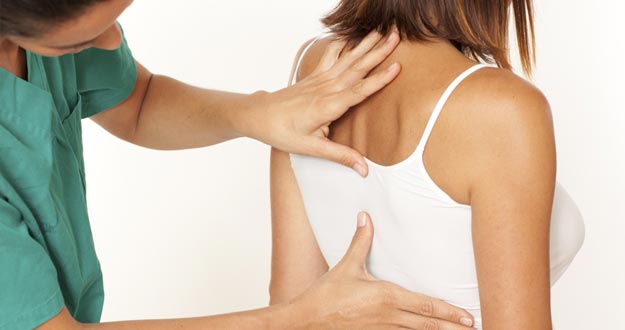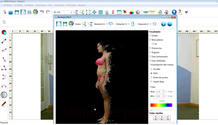Some days ago, I could read a very interesting news and I thought that perhaps you should like to share it with me: Some Spanish researches create a 3D diagnosis system for back.
A 3D software, developed by a team of physiotherapists and computer engineers from Barcelona, measure the column clinically. For a picture of the patient, it uses Kinect, a device for the Xbox 360 console; but, in this case, it is used to recognize the user's body.

The computer program developed, called Adibas Posture, can measure the posture of a person, to analyze the curve of its spine and to detect deformities, in back or legs, among other ailments.

Adibas Posture
The difference, compared to previous systems, such as the goniometer, plumb or digital photography --ie in 2D--, is that it is a faster and more accurate way to measure, since Kinect gets an image of the patient, in three dimensions, processed with the software.
As has told one of its creators, the physical therapist and professor at the International University of Catalonia, José Ramírez-Moreno, it also serves to diagnose, from the first day that the patient goes to the surgery, and to compare the results, from the last day after treatment, to observe its evolution.
"Knowing the curvature of the back is important, because it is a risk factor for having a pain, like a hernia or scoliosis. Ie, the patient has the curve of the spine deformed", he stated and pointed to identify points of problem helps in subsequent processing.
Ramírez-Moreno has explained that, until now, the patients were sent to get a digital image or a radiograph; the latter method is not safe and that prevents a pregnant woman, for example, can be tested.
The therapist pointed out that, although this diagnosis in 3D can not be compared with a radiograph --not to view the state of bone inside--, it has a measurement error below 5 degrees and 5 mm, as recorded by an academic study, that he has developed, to demonstrate the validity of the system.
By the moment, they are interested by this system sports organizations, as one of its applications is to measure the flexibility of the muscles of athletes. "If the test comes out that the person examined is very flexible, you can make a specific treatment for prevent injuries”, Ramírez-Moreno told.
The project is a joint effort of professionals, from the Institute of Global Physiotherapy Mézières (IFGM), --entity that has funded part of the investigation-- and computer engineering, from the University of Barcelona, who also have created a company to market it, Physicaltech.
It has been four years of research, that began from the work of the physiotherapists from the IFGM, working on postural reeducation and they needed instruments, to measure patients.
In a first phase, they employed digital photography, a less accurate system, until the Ramírez-Moreno himself and the engineer, Miguel Reyes, heard about the launch of Kinect 1, in 2010.
Bought it and began to investigate, "It was an event to have a device that identifies the movement and with which you can interact", says the Chairman of the Board of Physicaltech. Now, the team is already working with the second version of Kinect and doing tests to validate its operation.
Well, I hope that these researches continue working on this project, to help many people.
Until my next post, kind regards,
Luis.
Sponsored by Costaluz Lawyers.
Please click below:
